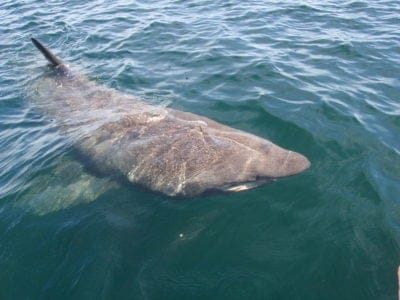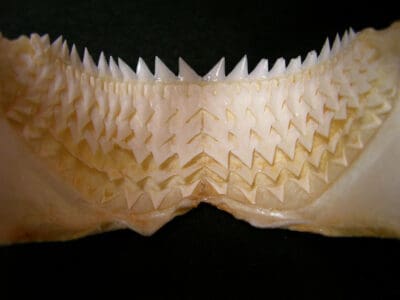Fish: Different Types, Definition, Photos, and More
Fish: Different Types, Definition, Photos, and More

Spiders that fly! Fish that walk! And 1000+ more incredible animals. Discover them all for FREE
Fish are aquatic vertebrates. They usually have gills, paired fins, a long body covered with scales, and tend to be cold-blooded. “Fish” is a term used to refer to lampreys, sharks, coelacanths, and ray-finned fishes, but is not a taxonomic group, which is a clade or group containing a common ancestor and all its descendants. Instead, there are 3 main classes, groups, or types of fish: bony fish (Osteichthyes), jawless fish (Agnatha), and cartilaginous fish (Chondrichthyes). Fish are the most diverse group among the vertebrates, with over 33,000 different types of fish species.
No one really knows how many different types of fish exist in the world, more are being discovered constantly. We may soon have over 35,000, or even 40,000 known species!
5 Fish Characteristics
There are three superclasses into which fish are grouped: Bony fish (Osteichthyes), jawless fish (Agnatha), and cartilaginous fish (Chondrichthyes). Ray-finned fishes are of the class Actinopterygii, while lobe-finned fishes are of the class Sarcopterygii. Both are clades of bony fishes.
Regardless, all fish have some characteristics in common that distinguish them from other animals.
- Cold-bloodedness: All fish are ectothermic or cold-blooded, meaning they cannot regulate their internal body temperature. Even warm-blooded fish such as tuna and mackerel sharks have only “regional endothermy” or warm-bloodedness limited to certain areas.
- Water habitat: All fish live in bodies of water, whether it is freshwater or saltwater. However, not all creatures that live in water are fish.
- Gills to breathe: Fish have gills throughout their life cycle. As with the water habitat, although all fish have gills, not all creatures with gills are fish.
- Swim bladders: Specialized organs fill with air to keep the fish afloat and in some species help them survive with low oxygen levels. They also help fish sleep and are sensitive enough to detect the movement of food and predators.
- Fins for movement: Most common are a tail fin, a pair of side fins, a dorsal fin and an anal fin. Variations exist but they all provide motion, maneuverability and stability.
Fish Exceptions
There are several exceptions to the common definition of a fish. For example, hagfish don’t have scales and aren’t true vertebrates (or are considered primitive vertebrates); mudskippers are amphibious fish that can live outside water; lungfish use lungs instead of gills to breathe; lampreys lack paired fins, and tuna are warm-blooded.
Also, not all fish groups come from fish lineages. The superclass Tetrapoda of the four-listed animals is considered to be a group within Sarcopterygii, and includes amphibians, reptiles, birds, and mammals. Hence, Sarcopterygii includes both lobe-finned fishes and tetrapods.
Finally, not all aquatic creatures which resemble fish are considered fish. Whales, dolphins, and porpoises are aquatic mammals, for example.
Fish Pregnancy
- There are two main types of fish pregnancies, ovoviviparity or aplacental viviparity (egg-bearing) and viviparous (embryo-bearing). Both are considered to be live-bearing.
- Ovoviparity has the eggs develop and hatch internally, with the young being born live. It can express either ovuliparity (external fertilization of eggs and zygote development), oviparity (internal fertilization of eggs and external development of zygotes as eggs with yolks), or ovoviviparity (internal fertilization of eggs and internal development of embryos with yolks). Stingrays, seahorses and some shark species are ovoviviparous. So are guppies, mollies, swordtails, halfbeaks and platies.
- Viviparity has embryos develop internally before being born live. It can express either histotrophic (“tissue-eating”) viviparity (mother provides no nutrition and embryos eat their unborn siblings or mother’s unfertilized eggs) or hemotrophic (“blood-eating) viviparity (mother provides nutrition, usually through a placenta). Many shark species are viviparous.
You can read about some types of fish that are extinct.
Different Types of Fish:
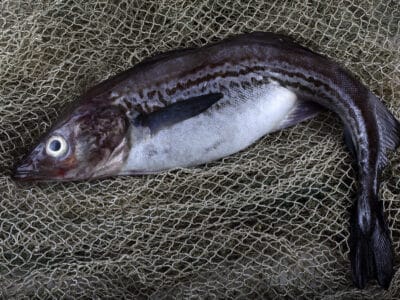
Alaskan Pollock
It’s one of the most commonly eaten fish in the world
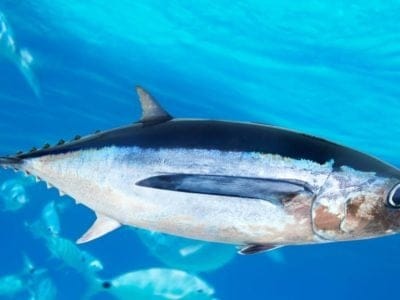
Albacore Tuna
The albacore is a very fast swimmer
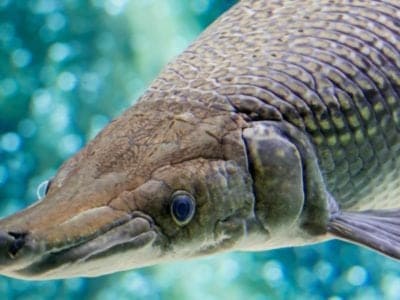
Alligator Gar
The alligator gar has toxic eggs to protect against predators
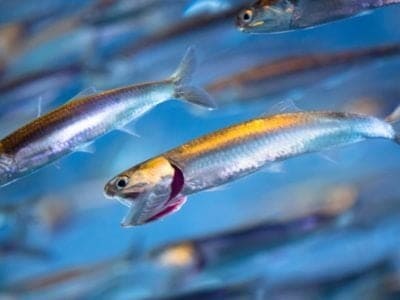
Anchovies
November 12th is celebrated as National Pizza with the Works Except Anchovies Day
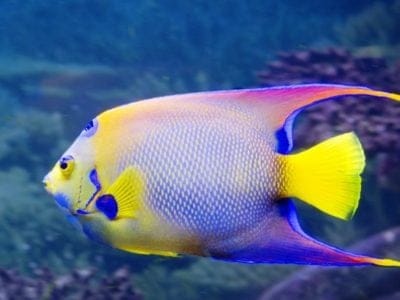
Angelfish
There are 70 different species!
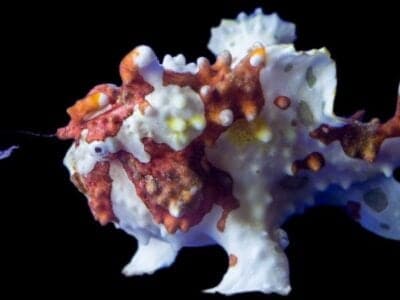
Anglerfish
The anglerfish has a glowing lure on its head to attract unsuspecting prey
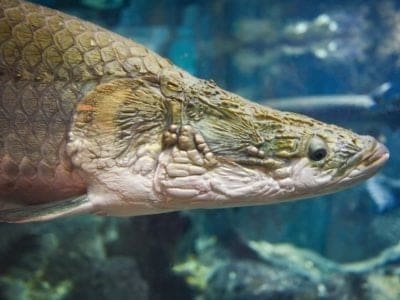
Arapaima
One of the largest freshwater fish
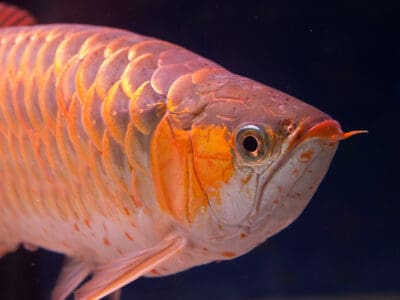
Asian Arowana
The male Asian arowana raises the eggs in its mouth
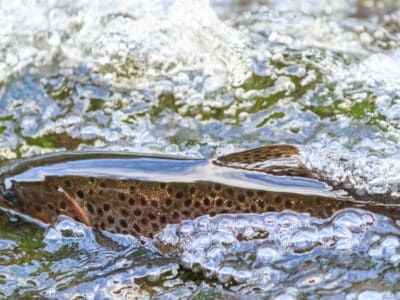
Atlantic Salmon
These fish are known for their ability to leap and fight when hooked.

Australian Flathead Perch
This small fish fetches a high price tag, with individuals selling from $1,000 to $5,000.

Baiji
Baijis use echolocation to find food in the Yangtze River.

Banana Eel
Named for the yellow body and brown spots that make it look like a banana.

Banjo Catfish
The banjo catfish is extremely shy and known for hiding from onlookers.
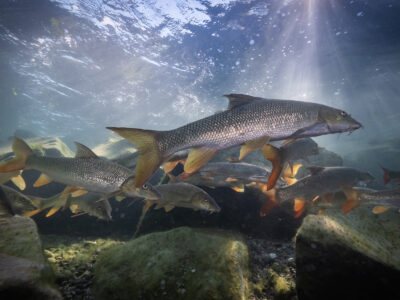
Barb
There are over 1768 known species!

Barracuda
Can grow to nearly 2 meters long!
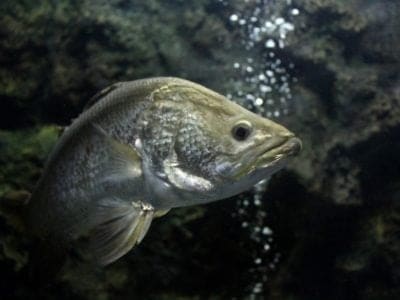
Barramundi Fish
Scale rings indicate age
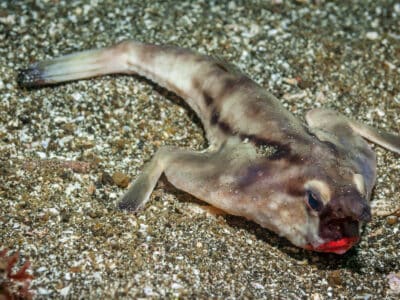
Batfish
The batfish has a lure on its head to attract prey

Beluga Sturgeon
The beluga sturgeon is one of the largest bony fish in the world!
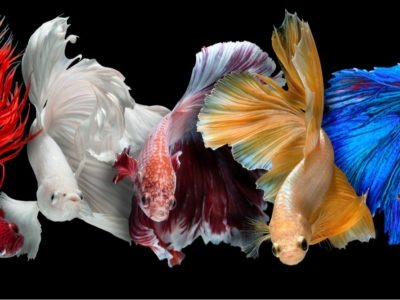
Betta Fish (Siamese Fighting Fish)
Can live in low-oxygen environments!
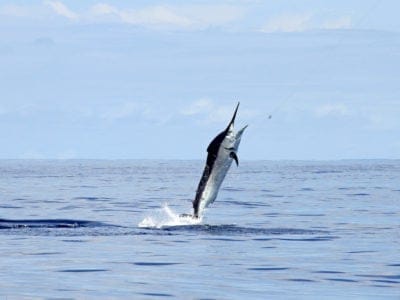
Black Marlin
Every black marlin is born as a female.

Bladefin Basslet
The tiny bladefin basslet belongs to the same subfamily as the giant grouper, Epinephelinae.

Blobfish
One of the ugliest creatures in existence!
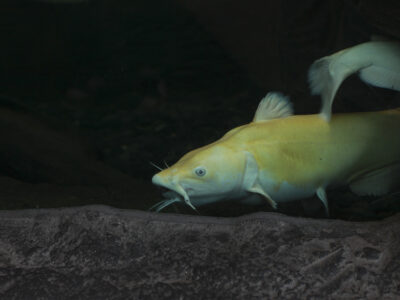
Blue Catfish
It’s a strong fighter when caught on a fishing line

Blue Eyed Pleco
Can live safely with many types of fish.
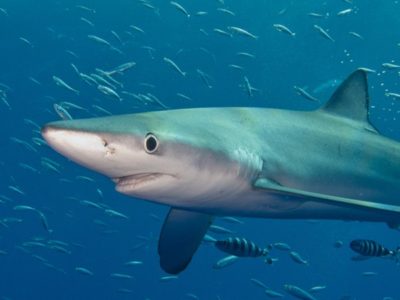
Blue Shark
Blue sharks can have up to 135 pups at a time.
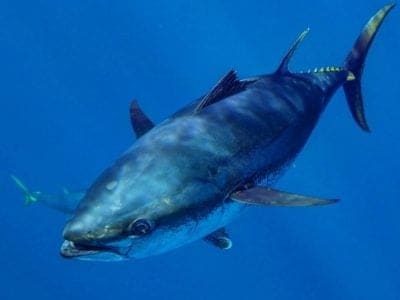
Bluefin Tuna
The bluefin is one of the largest fish in the world
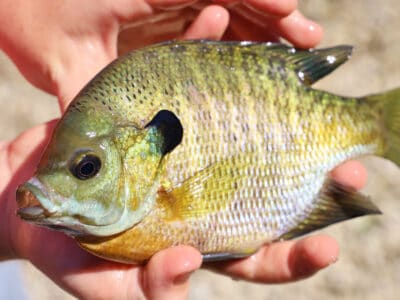
Bluegill
The world record for longest bluegill is 15 inches.
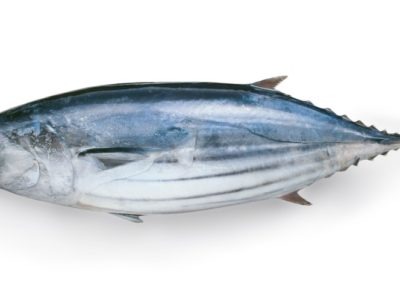
Bonito Fish
May eat squid or other small invertebrate ocean life
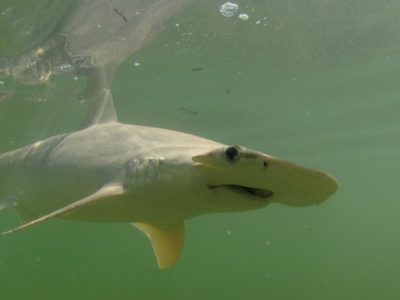
Bonnethead Shark
Bonnetheads are the only hammerhead sharks that use their pectoral fins to swim.
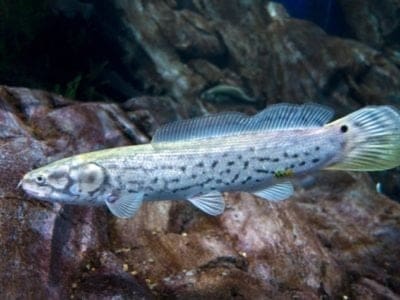
Bowfin
The bowfin is a primitive fish that first evolved in the Jurassic
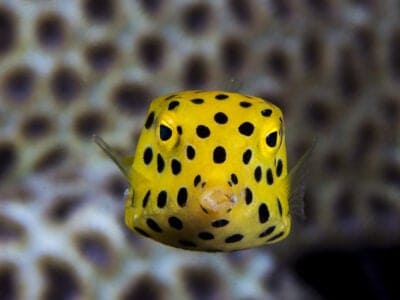
Boxfish
Can release a toxin from its skin
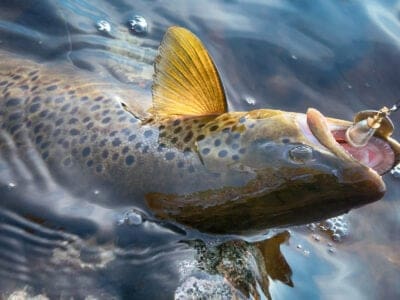
Bull Trout
The bull trout is not actually a trout, but a member of the char family.
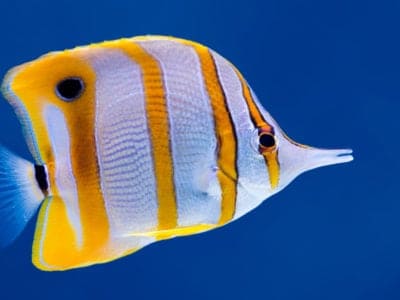
Butterfly Fish
There are more than 100 different species!
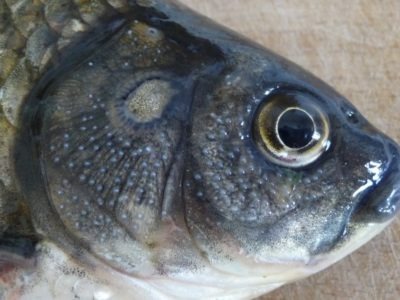
Carp
The carp is one of the most popular pond fishes in the world
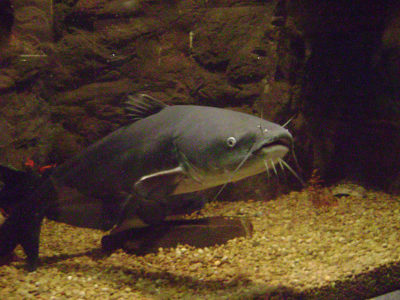
Catfish
There are nearly 3,000 different species!
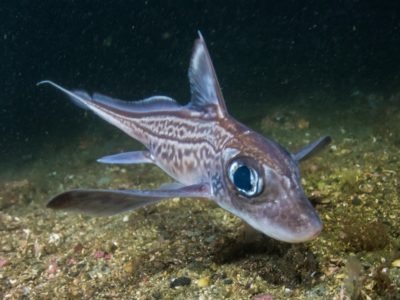
Chimaera
Also called ghost shark
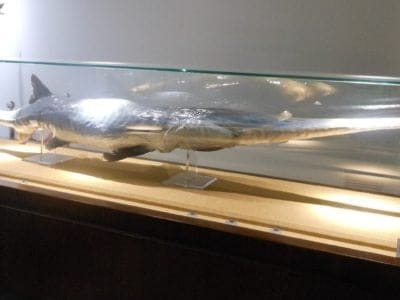
Chinese Paddlefish
The Chinese paddlefish is one the largest freshwater fish in the world
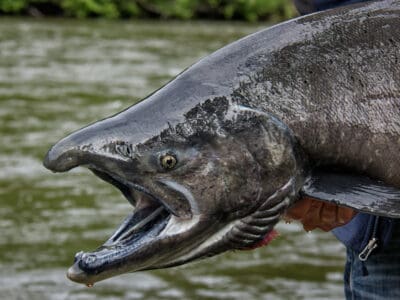
Chinook Salmon
The Chinook salmon undertakes a long migration for the spawning season
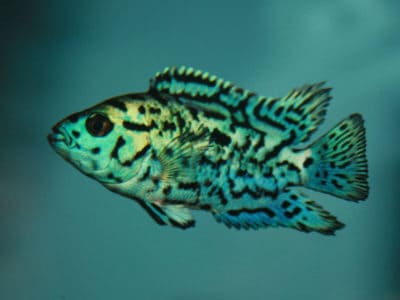
Cichlid
There are more than 2 000 known species!
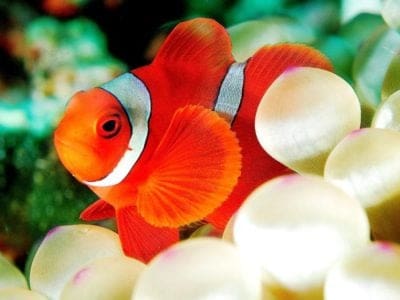
Clownfish
Also known as the anemonefish!
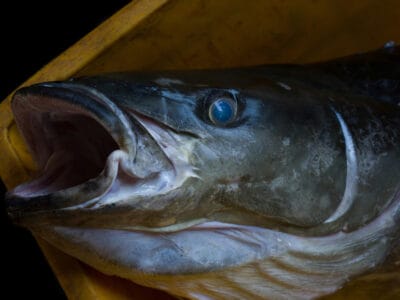
Cobia Fish
It has teeth not only in its jaws but in its tongue and the roof of its mouth
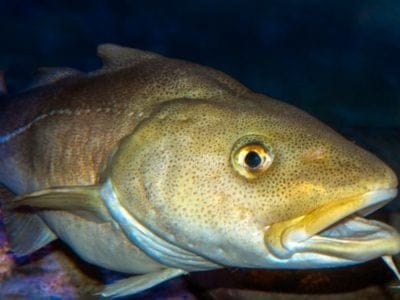
Codfish
They eat other fish
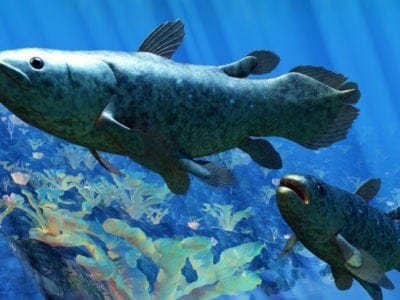
Coelacanth
The coelacanth first evolved almost 400 million years ago.
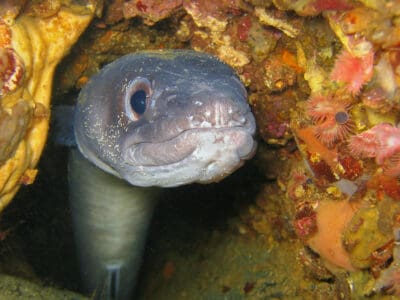
Conger Eel
The European Conger ( Conger conger) can weigh as much as an adult human!
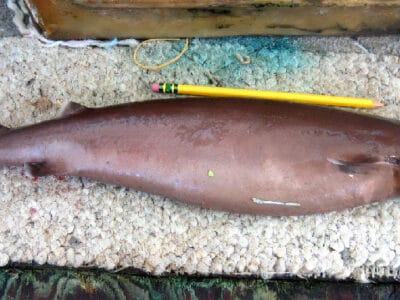
Cookiecutter Shark
The cookiecutter shark takes its name because it leaves a cookie-shaped bite hole in its prey.
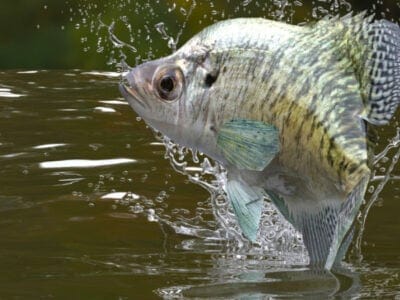
Crappie Fish
The crappie is one of the most popular freshwater fish in North America.
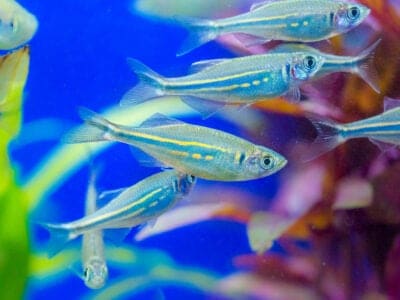
Danios
These fish make a popular choice for aquarium hobbyists due to their hardy nature.
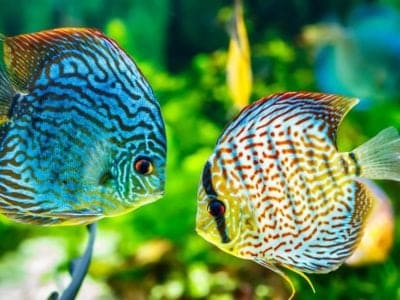
Discus
One of the only schooling Cichlids!
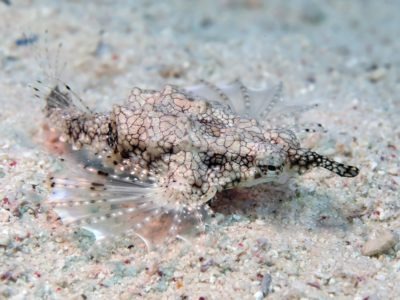
Dragonfish
Dragonfish can emit red light from their eyes
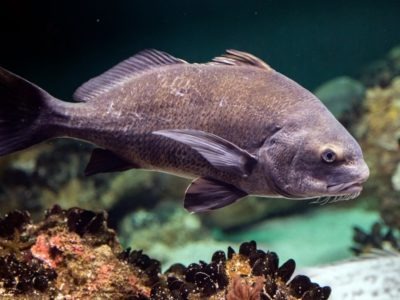
Drum Fish
The drum fish makes a croaking sound with its swimming bladder!

Eel
Eels can be a mere few inches long to 13 feet!
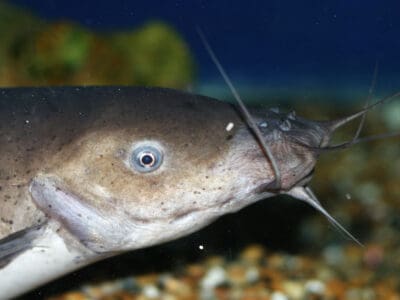
Electric Catfish
The electric catfish can discharge an electric shock up to 450 volts

Electric Eel
Despite its powerful shock, electric eels have terrible vision.
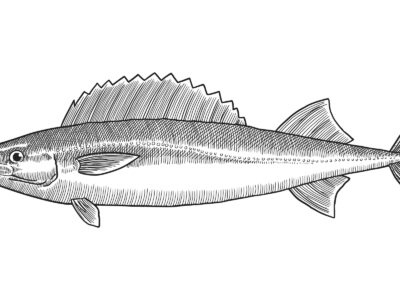
Escolar
Its system can’t metabolize wax esters, which can lead to unpleasantness for diners.
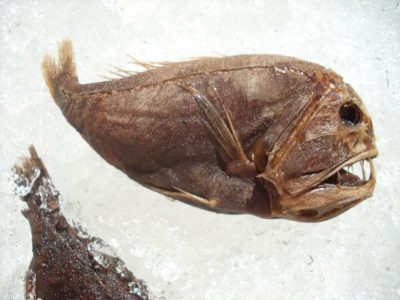
Fangtooth
Has the largest teeth compared to body size of any known fish
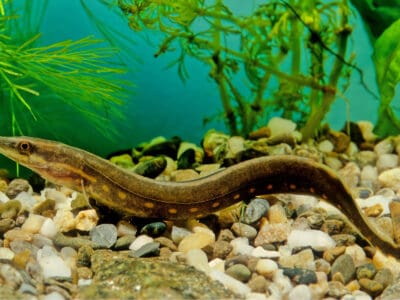
Fire Eel
Fire Eels are not true eels.
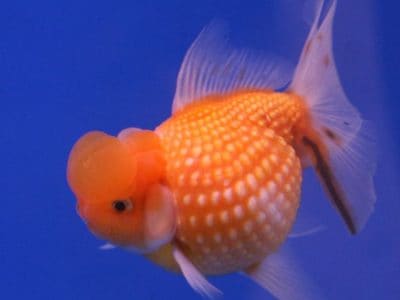
Fish
Respire through the gills on their heads!
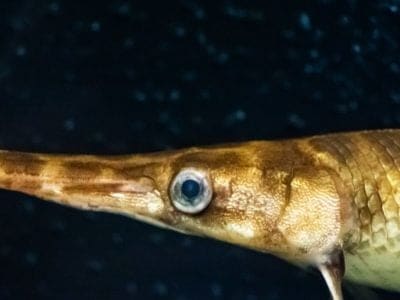
Florida Gar
The Florida gar has toxic eggs to protect against predators
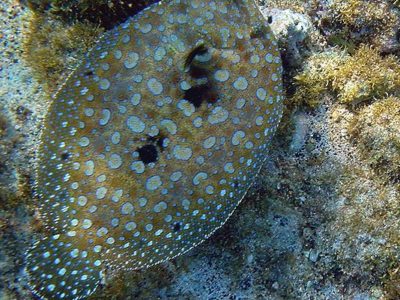
Flounder
A flat fish found in the Atlantic and Pacific!
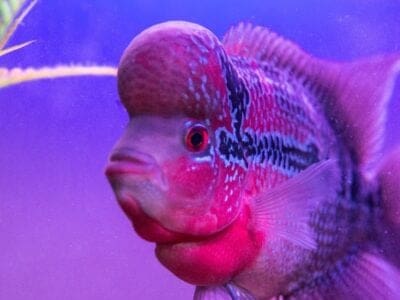
Flowerhorn Fish
The Flowerhorn fish is an artificial species; it does not exist naturally
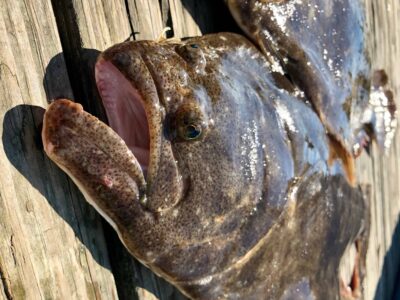
Fluke Fish (summer flounder)
The chameleon of the seas!
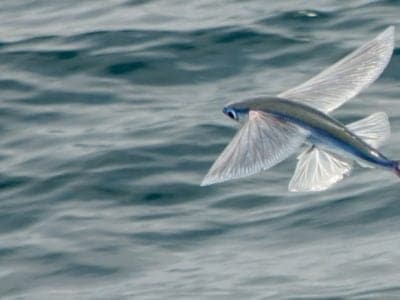
Flying Fish
Can glide in the air for hundreds of feet
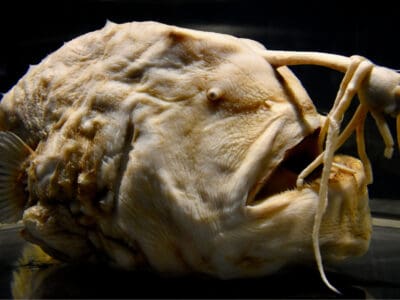
Football Fish
The football fish is named after its unusual round or oblong shape
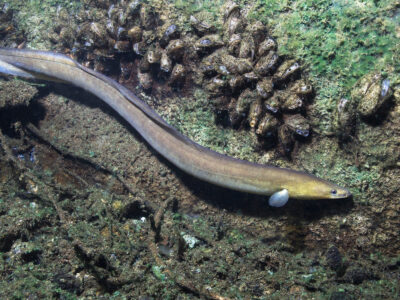
Freshwater Eel
Freshwater eels are actually catadromous, meaning they migrate to saltwater to spawn
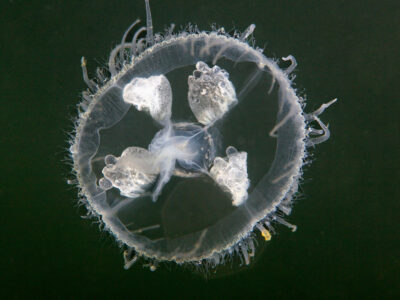
Freshwater Jellyfish
The freshwater jellyfish is native to China but is now found all over the world

Frilled Shark
Frilled Sharks got their name from the six rows of gills on their throat that look like ruffled collars.
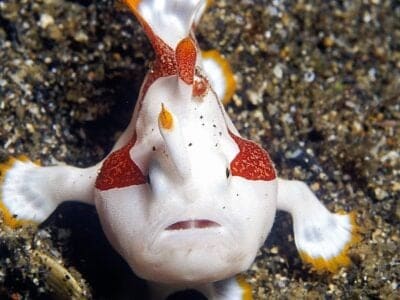
Frogfish
The frogfish can change colors, but it takes several weeks to do so
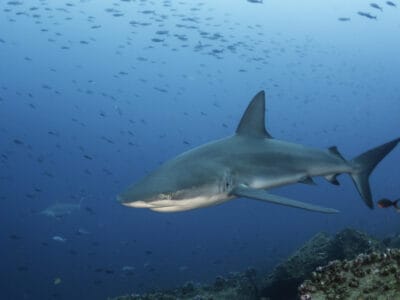
Galapagos Shark
Galapagos sharks are cannibalistic and sometimes eat their young, so the pups stay away from the adults in shallow water.

Gar
Can grow to more than 3m long!

Garden Eel
Garden eel colonies are made up of hundreds to thousands of individuals.
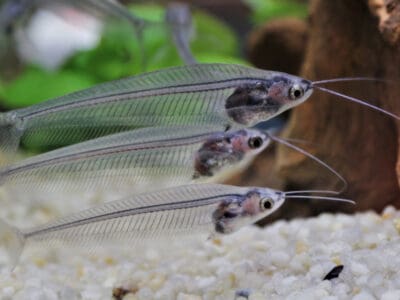
Ghost Catfish
You can see its heart beating
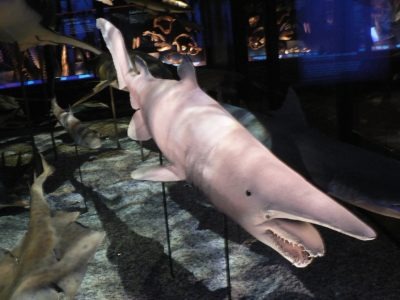
Goblin Shark
Goblin Sharks are called a living fossil because their family, Mitsukurinidae, can be traced back 125 million years.
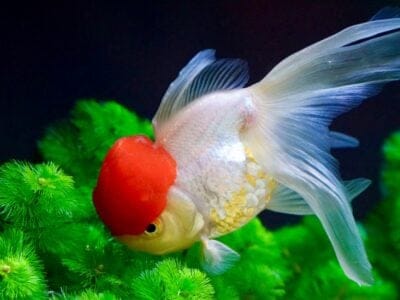
Goldfish
Goldfish and common carp can mate and produce offspring
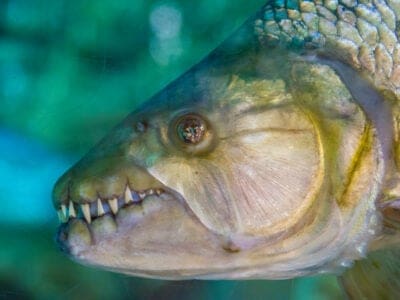
Goliath Tigerfish
Featured in River Monsters TV series
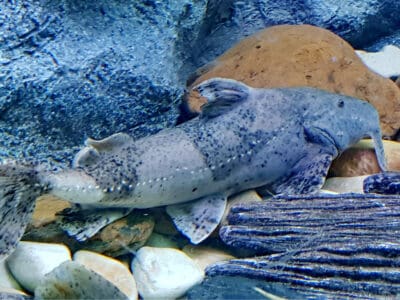
Goonch Catfish
The goonch catfish, or giant devil catfish, is one of the most fierce freshwater fish.
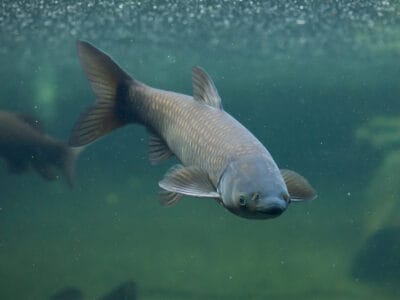
Grass Carp
The grass carp is considered to be a natural weed control agent.
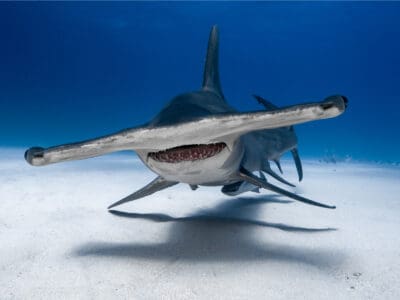
Great Hammerhead Shark
Great hammerhead sharks have a 360 view because their eyes are situated on the ends of their mallet-like heads.
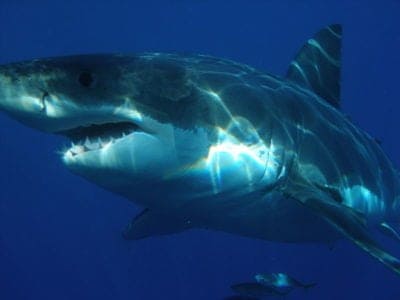
Great White Shark
Can grow to more than 8 meters long!
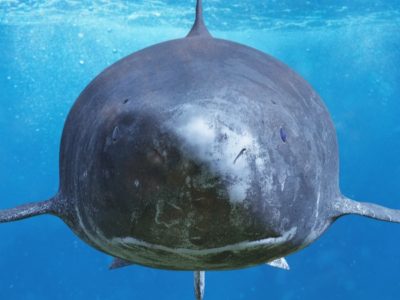
Greenland Shark
This shark has the longest lifespan of any vertebrate.
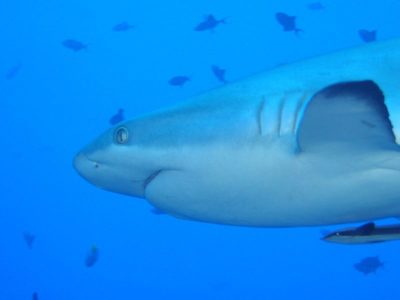
Grey Reef Shark
One of the most common shark species!
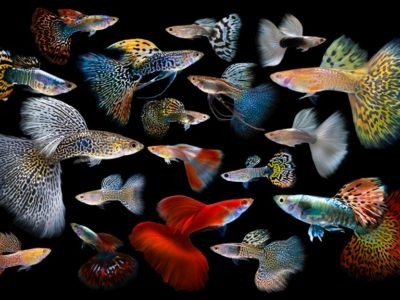
Guppy
Also known as the Millionfish!
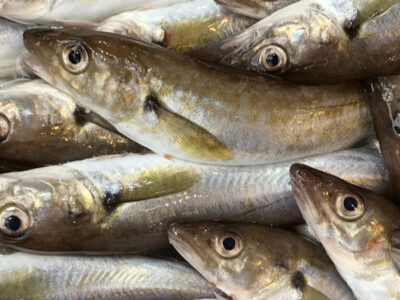
Haddock
The haddock is very popular in both recreational and commercial fishing
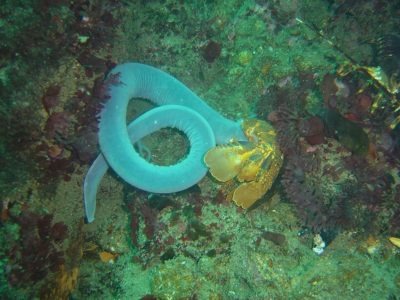
Hagfish
Can use slime to suffocate marine predators or escape capture
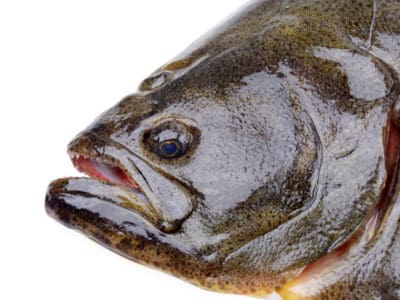
Halibut
The word “halibut” is comes from haly meaning “holy” and butte meaning flat fish due to its popularity on Catholic holy days.

Hammerhead Shark
Found in coastal waters around the world!
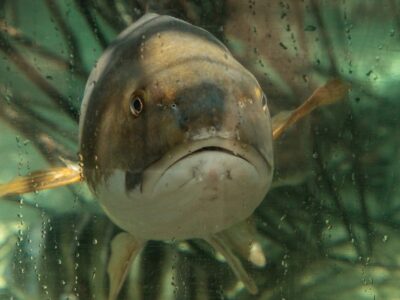
Hardhead Catfish
The hardhead catfish has a sharp spine near its fin to inject venom
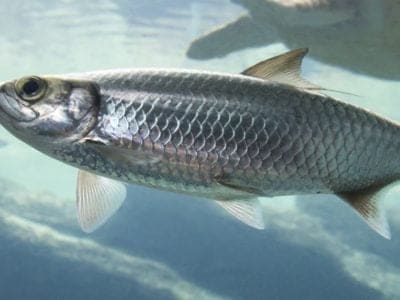
Herring
People enjoy the taste of the oily fish in many different ways including pickled, smoked, salted, dried and fermented.
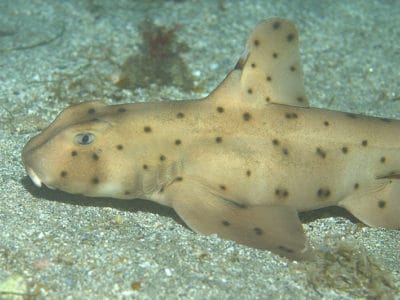
Horn Shark
Endemic to the Californian coast!
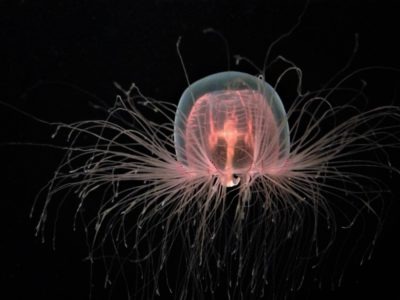
Immortal Jellyfish
Excellent hitchhiker on long-trip cargo ships
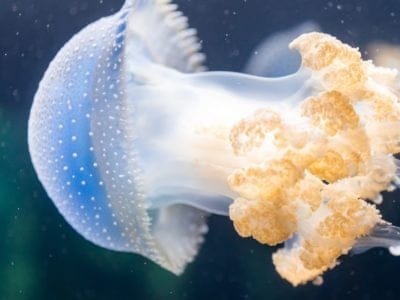
Jellyfish
Have tentacles around their mouths!
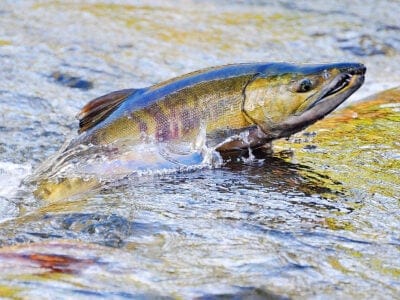
Keta Salmon
During spawning the look of the male changes. Among other things, he grows a beak called a kype that bears fangs.
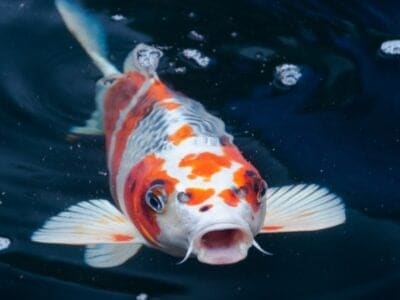
Koi Fish
In Japanese, the word koi sounds like the word for love. So the fish is a symbol of love among other good things.
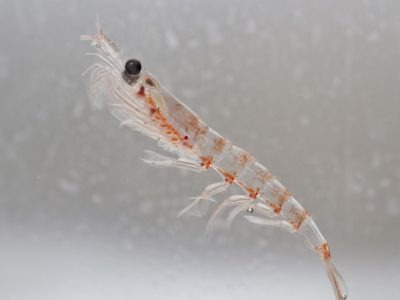
Krill
The krill is perhaps the most important animal in the marine ecosystem!
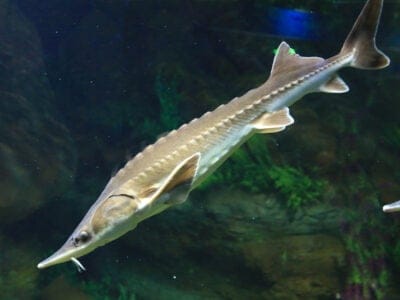
Lake Sturgeon
Its skeleton is part cartilage and part bone.

Lamprey
Not related to the eel
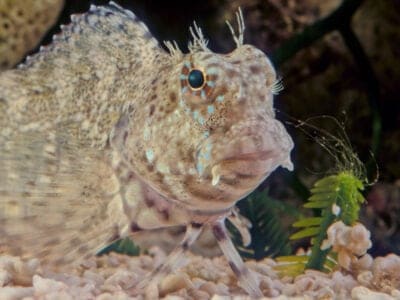
Lawnmower Blenny
Must be in temperatures of 78 degrees Fahrenheit to breed
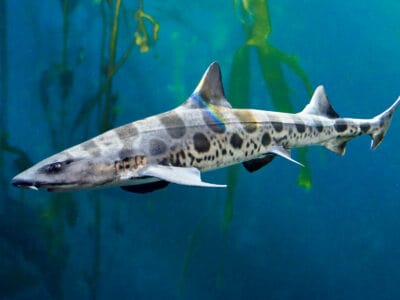
Leopard Shark
Leopard Sharks have teeth with three points.
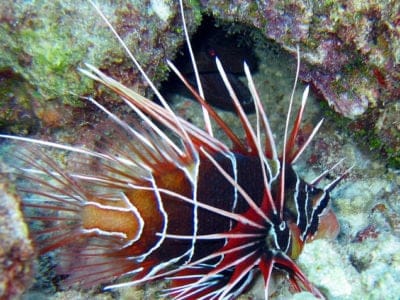
Lionfish
Females can release up to 15,000 eggs at a time!
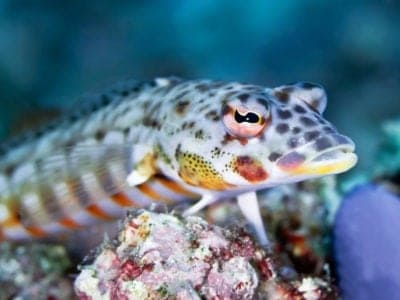
Lizardfish
The lizardfish can camouflage itself against the sandy bottom to avoid predators.
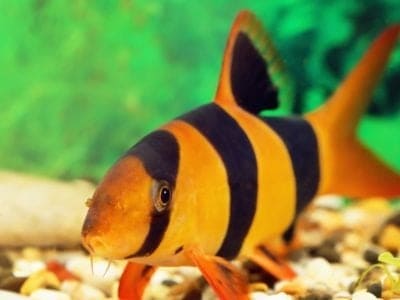
Loach
Have sharp spines below their eyes
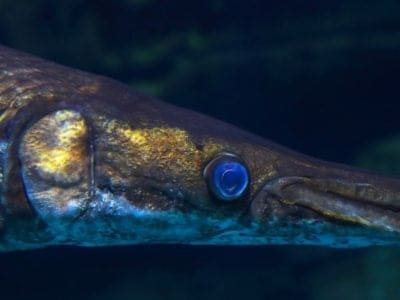
Longnose Gar
The longnose gar species of the gar family has potentially existed for 100 million years.
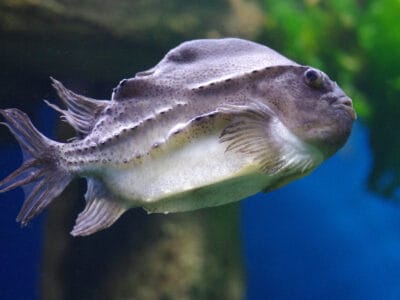
Lumpfish
The lumpfish have sticky suction cups on their fins

Lungfish
The lungfish first evolved almost 400 million years ago.
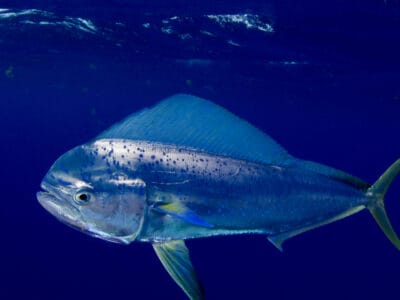
Mahi Mahi (Dolphin Fish)
It’s called the rabbit of the ocean because it multiplies so quickly.
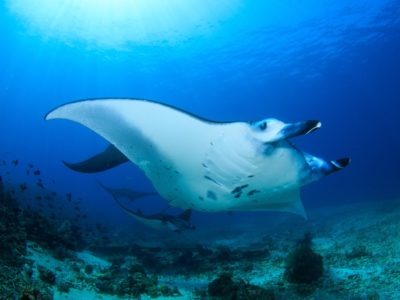
Manta Ray
Can grow up to 9m wide!
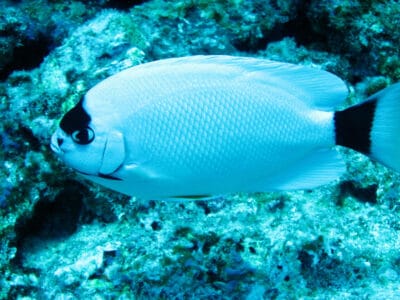
Masked Angelfish
All masked angelfish are female until sometime after sexual maturity, at which point some become male.
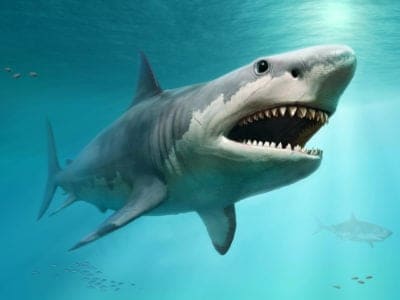
Megalodon
The largest shark to ever live!
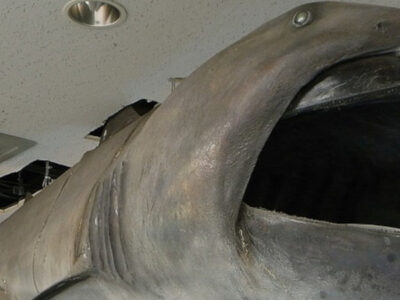
Megamouth Shark
Swims with its mouth open to capture prey
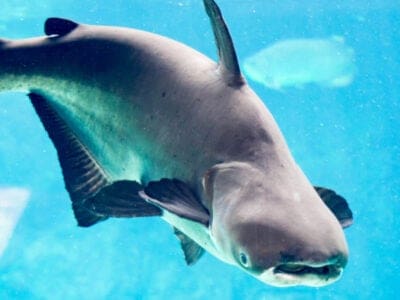
Mekong Giant Catfish
The Mekong giant catfish is the largest purely freshwater fish in the world
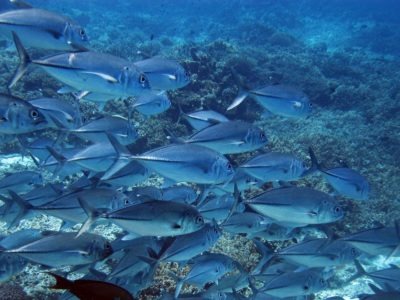
Milkfish
Females lay up to 5 million eggs at one time in warm, shallow and salty waters
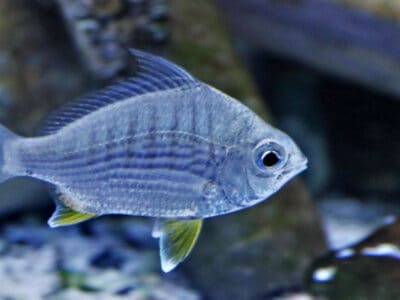
Mojarra
The mojarra’s protruding mouth allows it to sift along the seabed for food
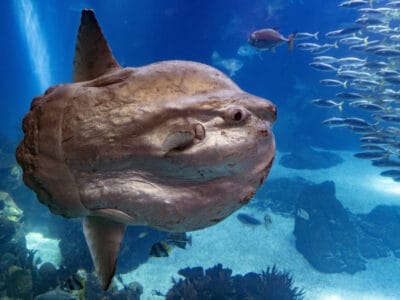
Mola mola (Ocean Sunfish)
The ocean sunfish is the biggest bony fish in the world
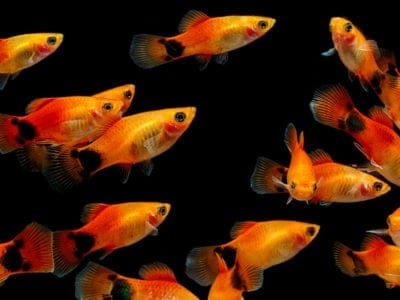
Molly
Known for their calm and peaceful nature!
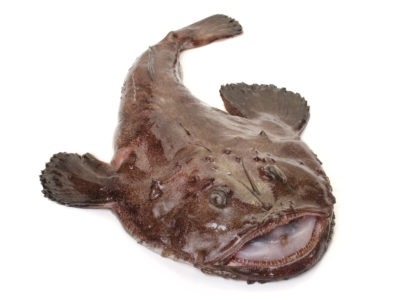
Monkfish
Called “The Poor Man’s Lobster!”
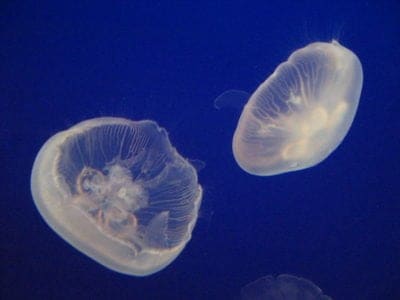
Moon Jellyfish
Moon Jellies are bioluminescent, so they glow in the dark! They can also de-age!
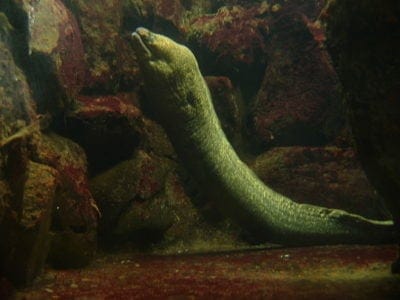
Moray Eel
Sometimes, groupers invite moray eels to help them hunt!
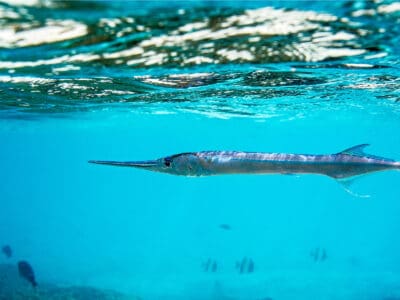
Needlefish
no stomach to digest food

Neptune Grouper
The largest recorded specimen ever caught was 17″ long

Nurse Shark
Commonly found in Central American waters!
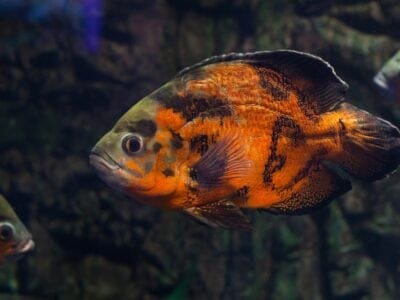
Oscar Fish
The Oscar fish has teeth in its throat!
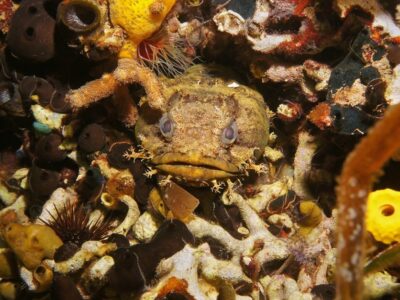
Oyster Toadfish
The oyster toadfish can produce poison to protect itself
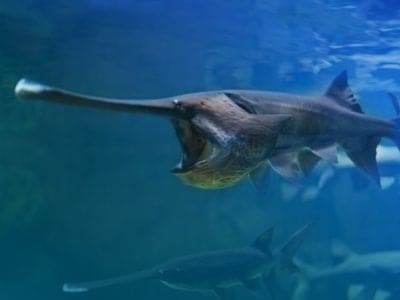
Paddlefish
Paddlefish have existed since the Cretaceous Period
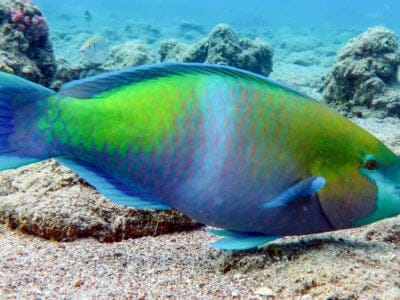
Parrotfish
The parrotfish can change from female to male at some point in its life.
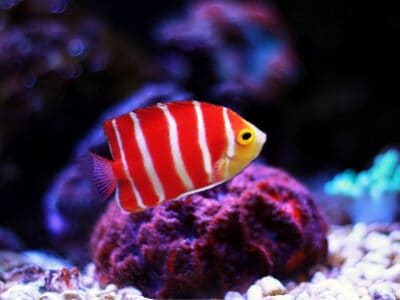
Peppermint Angelfish
The peppermint angelfish was only first described in 1992.

Pike Fish
Apex freshwater predators with fearsome teeth!

Pipefish
The male pipefish has the ability to carry fertilized eggs with him
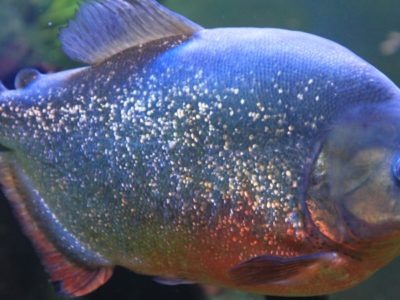
Piranha
Generally found in fast-flowing streams!
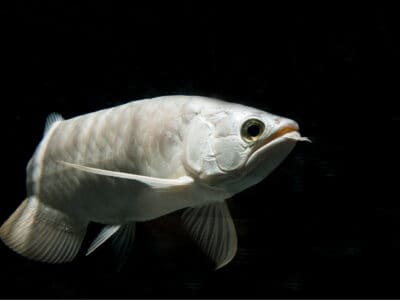
Platinum Arowana
The male broods the eggs and baby fish in his mouth.

Porbeagle Shark
The porbeagle is one of the few sharks that jumps out of the water
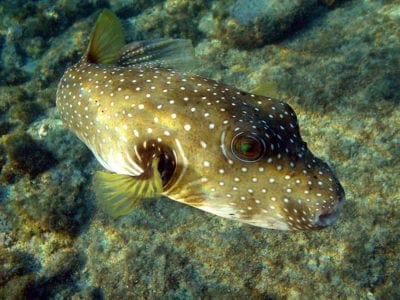
Pufferfish
The second most poisonous creature in the world!

Pygmy Shark
Pygmy sharks underbelly glows to attract prey that swims beneath it.
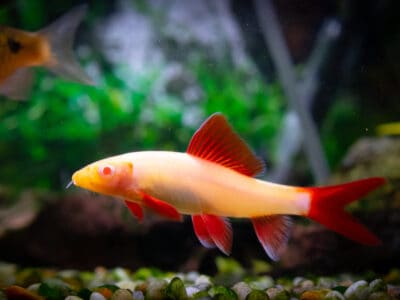
Rainbow Shark
The rainbow shark has been genetically modified to glow in the dark
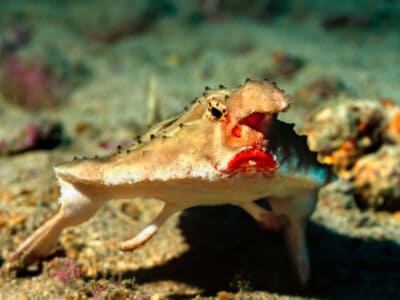
Red-Lipped Batfish
Despite its weird looks, the red-lipped batfish is harmless to humans
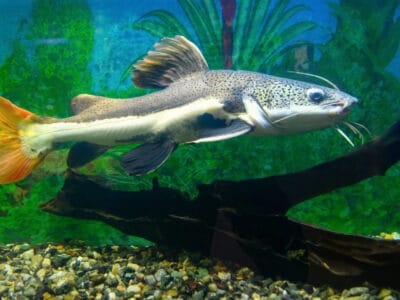
Redtail Catfish
One of three giant catfish species
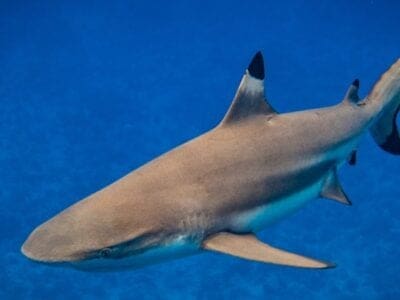
Reef Shark
Grey reef sharks can give birth without males
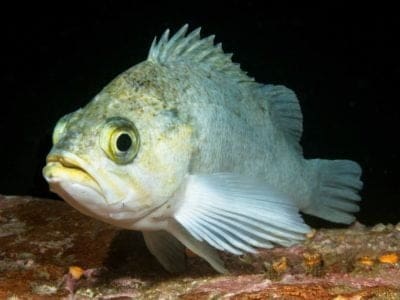
Rockfish
These fish can grow up to three feet long!
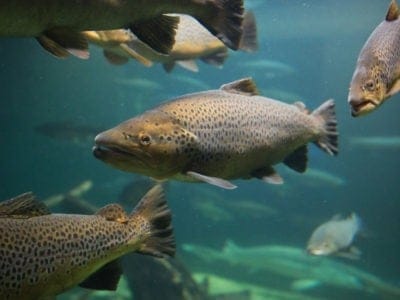
Salmon
Returns upstream every year to spawn
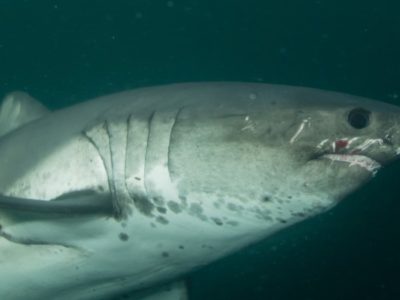
Salmon Shark
Salmon sharks are related to Great Whites.
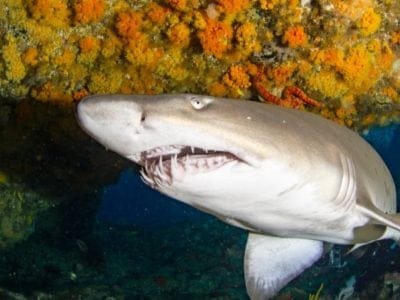
Sand Tiger Shark
The sand tiger is the shark most commonly seen in aquariums.
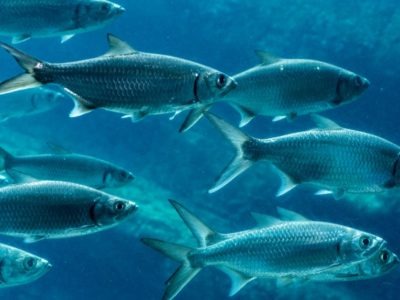
Sardines
Schools of sardines can be miles long and are often visible from an airplane

Sawfish
Sawfish teeth keep growing as the fish gets older
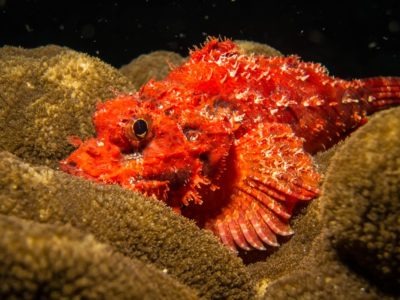
Scorpion Fish
There are more than 200 recognised species!
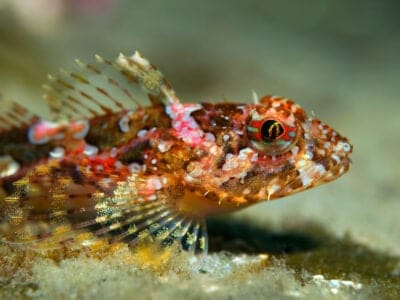
Sculpin
Its skull bones can compress so the fish can fit in narrow spaces
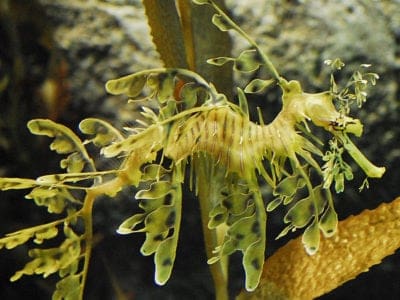
Sea Dragon
Inhabits tropical coastal waters of Australia!

Sea Slug
All sea slugs have both male and female sex organs
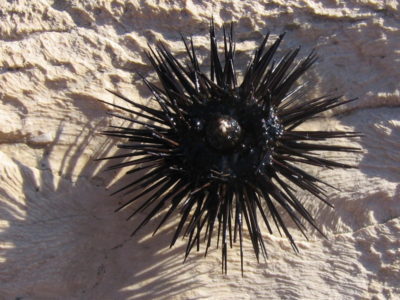
Sea Urchin
Can live for up to 200 years!
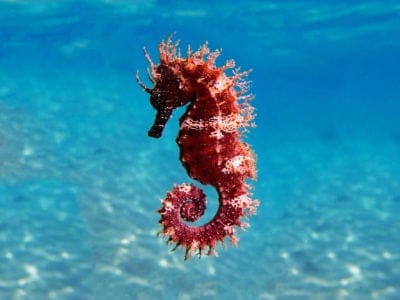
Seahorse
Males give birth to up to 1,000 offspring!
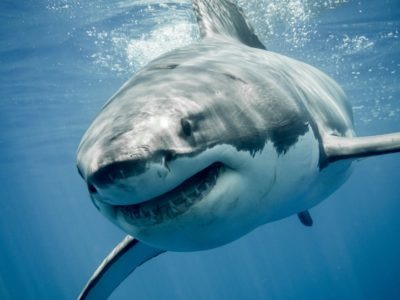
Shark
No shark species has any bones in their bodies
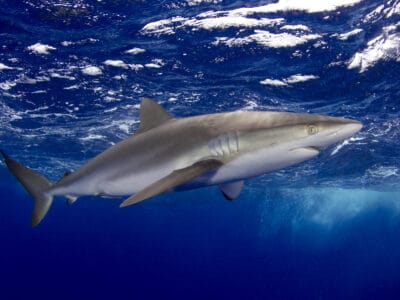
Silky Shark
Has an extremely acute sense of hearing
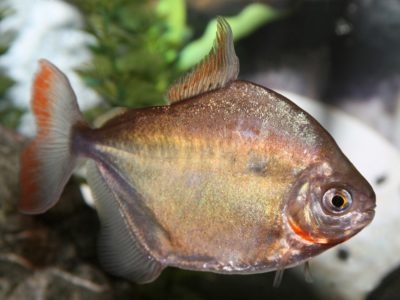
Silver Dollar
Closely related to the Piranha
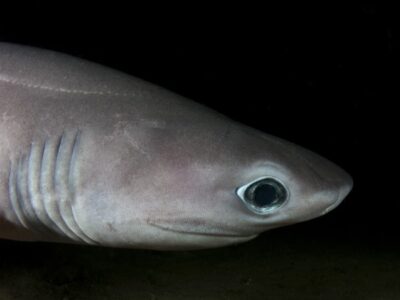
Sixgill shark
The sixgill shark has six pairs of gills instead of the normal five
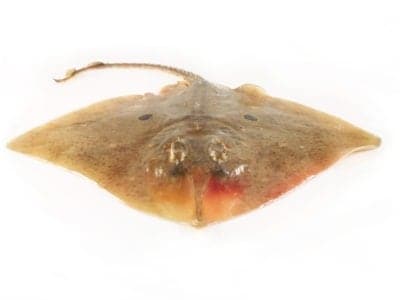
Skate Fish
More than 200 species exist!
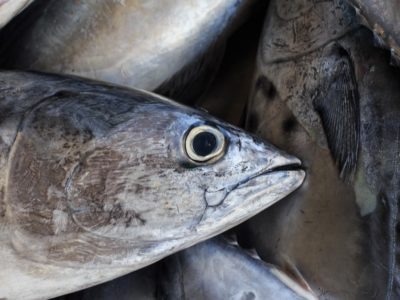
Skipjack Tuna
The skipjack is the most commonly caught tuna in the world
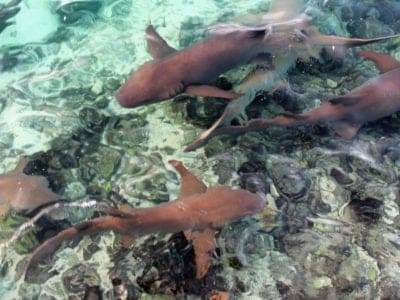
Sleeper Shark
The Greenland shark is one of the longest living vertebrates in the world.
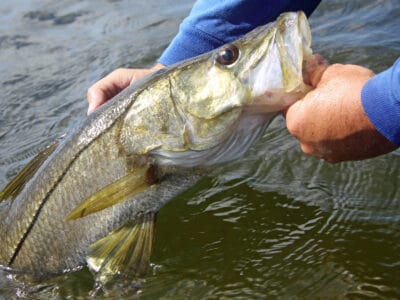
Snook Fish
Males change into females after the spawning season
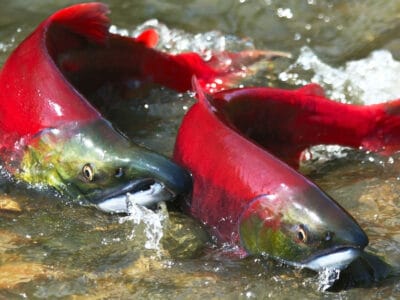
Sockeye Salmon
Called “red salmon” because their skin turns bright red to dirty red during spawning season

Spinner Shark
Can have up to 20 babies
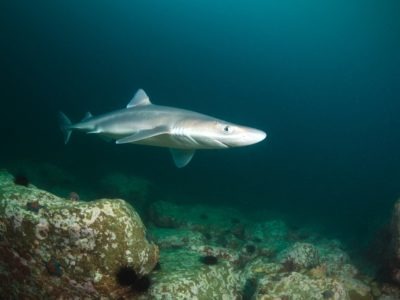
Spiny Dogfish
Found in ocean waters worldwide!

Sponge
There are more than 9,000 known species!
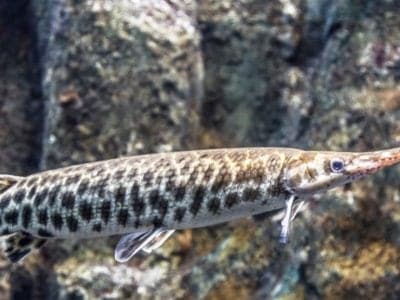
Spotted Gar
They are commonly mistaken as logs in the water due to their cylindrical body.
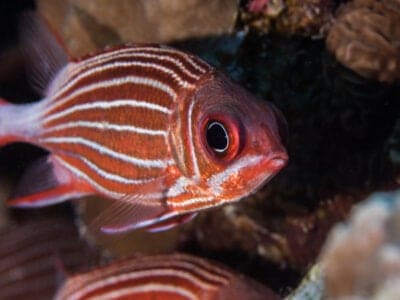
Squirrelfish
Uses vibrations to communicate with other fish
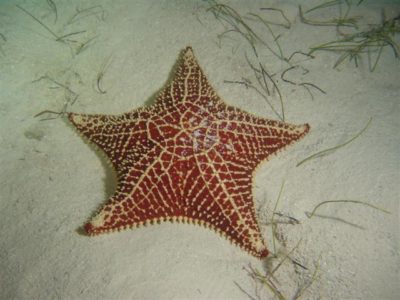
Starfish
Has 2 stomachs to aid digestion!
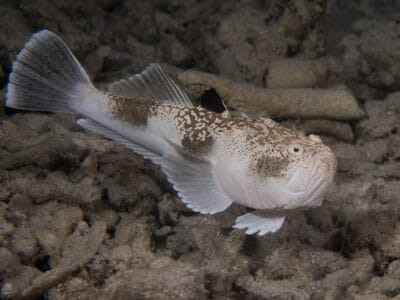
Stargazer Fish
Uses an electric shock to stun its prey!
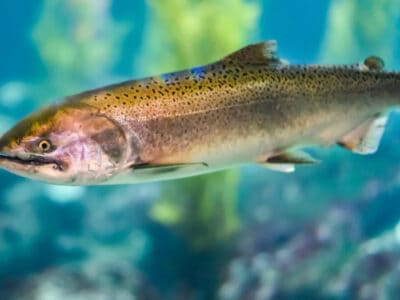
Steelhead Salmon
Steelhead live in freshwater rivers and streams for 1 to 2 years before migrating into the ocean
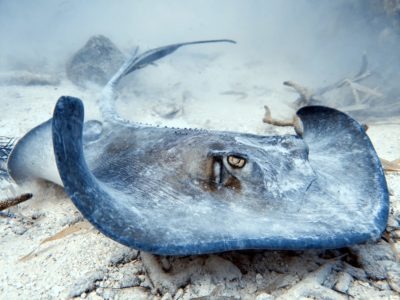
Stingray
It’s stinger is razor-sharp or serrated!
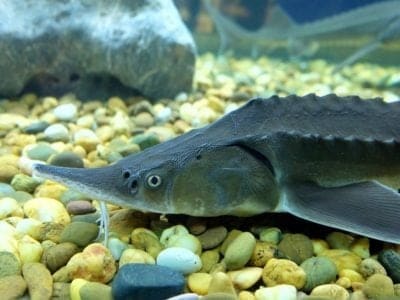
Sturgeon
Large species can swallow whole salmon
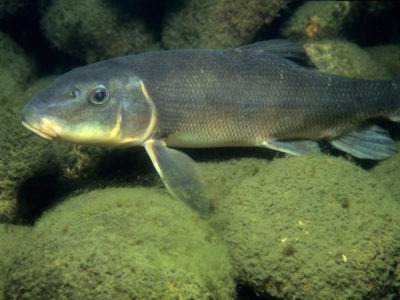
Sucker Fish
Commonly found throughout America!
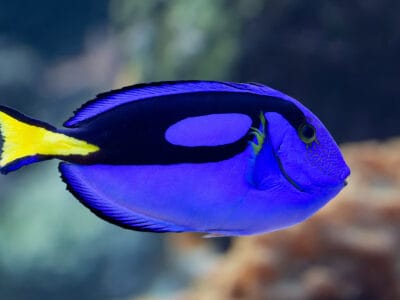
Surgeonfish
Paracanthurus hepatus, the palette surgeonfish or bluetang, is the only member of its genus
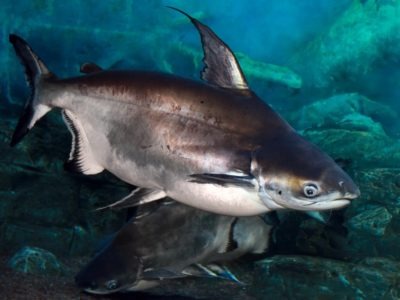
Swai Fish
The edges of an iridescent shark’s fins have a signature glow
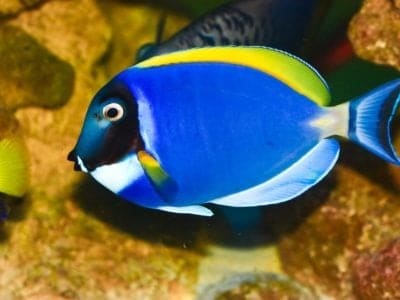
Tang
Found around shallow coral reefs!
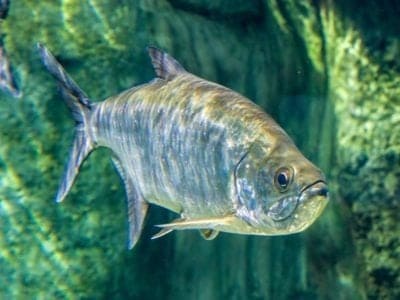
Tarpon
Its genus dates back to the Cretaceous period – 113 million years ago
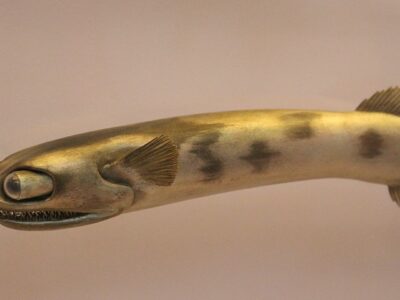
Telescope Fish
Swallows food, much of it larger than them, whole
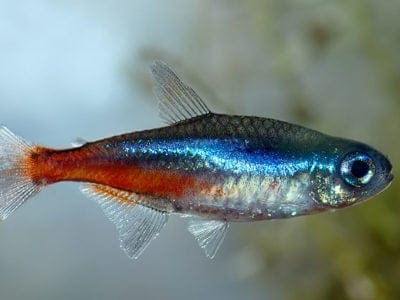
Tetra
Native to the freshwater streams of South America!

Tiger Shark
The fourth biggest species of shark in the world!
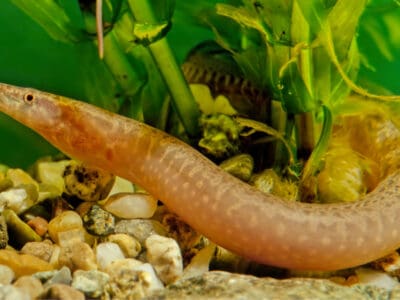
Tire Track Eel
They like to burrow into aquarium sand.
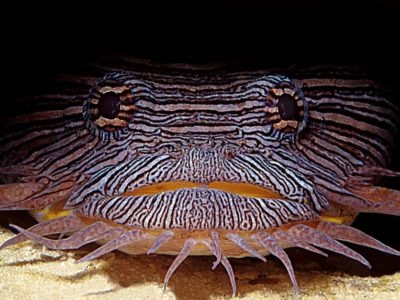
Toadfish
Can be heard out of water
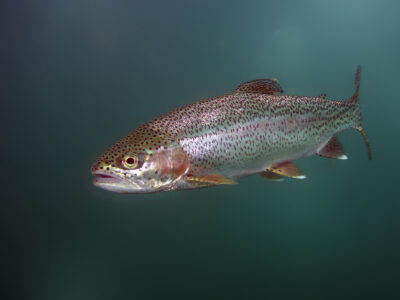
Trout
They don’t have scales for their first month of life!
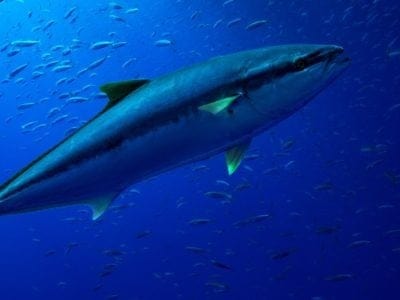
Tuna
The tuna has a sleek body that enables it to swim quickly through the water

Viper shark (dogfish)
Most data on these fish is based on observations near Japan.
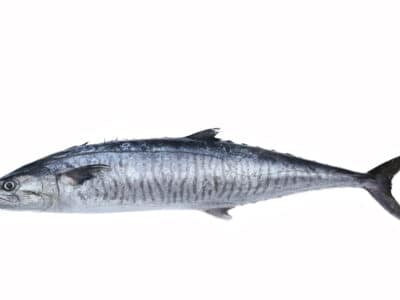
Wahoo Fish
Wahoo can change colors when they’re excited and while they hunt
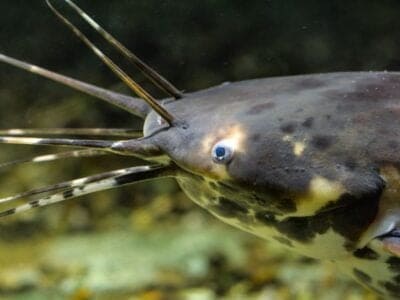
Walking Catfish
The walking catfish can move on land while breathing air
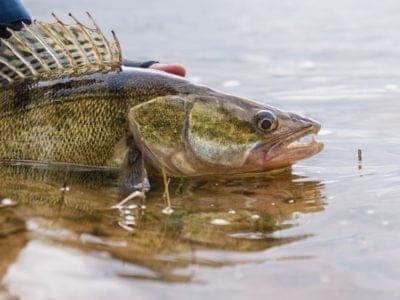
Walleye Fish
Has great night vision
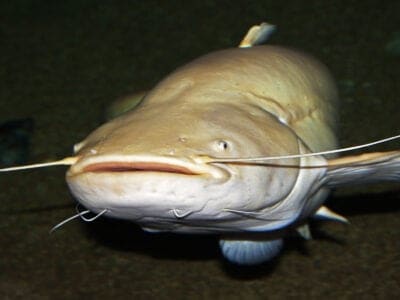
Wels Catfish
The wels catfish is among the largest freshwater fish in the world.
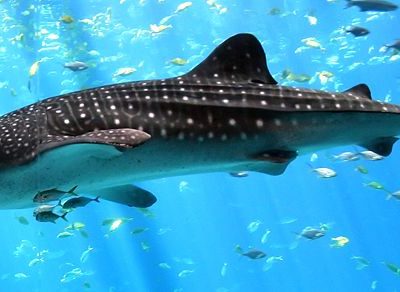
Whale Shark
The largest species of fish in the world!
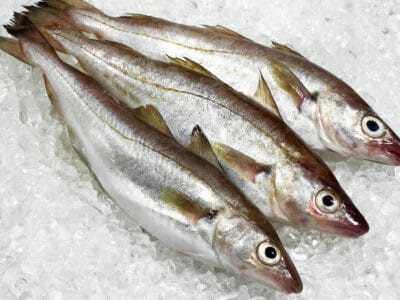
Whiting
“Whiting” can refer to certain other species of ray-finned fish
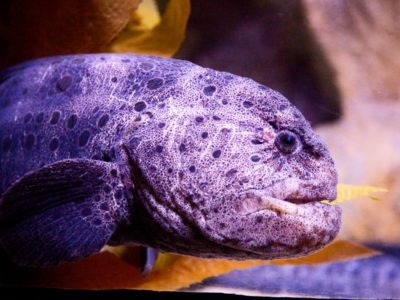
Wolf Eel
Wolf Eels may become tame and interact with human in areas where people frequently dive.
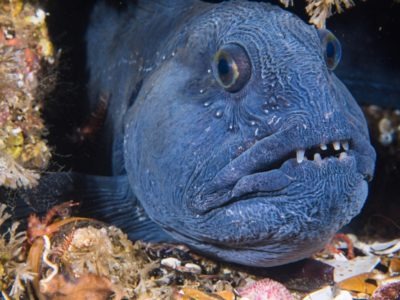
Wolffish
The wolffish has impressive canines with a powerful bite force!
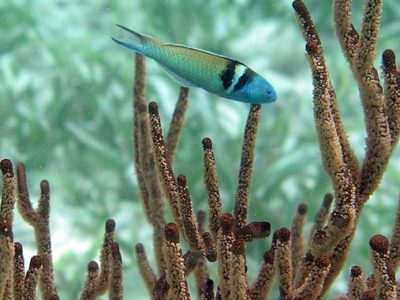
Wrasse
There are more than 500 different species!
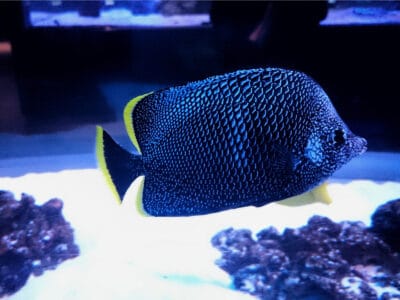
Wrought Iron Butterflyfish
Is endemic to Japan.
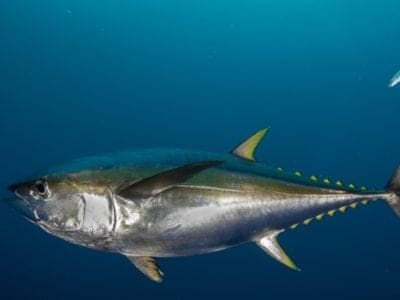
Yellowfin Tuna
The yellowfin forms schools with other tuna species
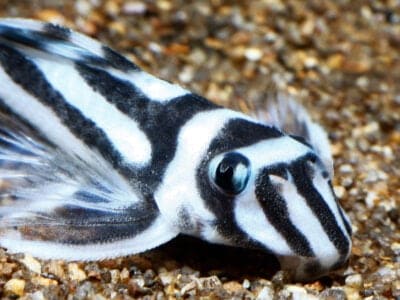
Zebra Pleco
The zebra pleco is a bottom feeder with a sucker mouth.

Zebra Shark
Can get to be 30 years old in the wild!
List of Fish
- Alaskan Pollock
- Albacore Tuna
- Alligator Gar
- Anchovies
- Angelfish
- Anglerfish
- Arapaima
- Asian Arowana
- Atlantic Salmon
- Australian Flathead Perch
- Baiji
- Banana Eel
- Banjo Catfish
- Barb
- Barracuda
- Barramundi Fish
- Basking Shark
- Batfish
- Beluga Sturgeon
- Betta Fish (Siamese Fighting Fish)
- Black Marlin
- Bladefin Basslet
- Blobfish
- Blue Catfish
- Blue Eyed Pleco
- Blue Shark
- Bluefin Tuna
- Bluegill
- Bonito Fish
- Bonnethead Shark
- Bowfin
- Boxfish
- Bull Trout
- Butterfly Fish
- Carp
- Catfish
- Chimaera
- Chinese Paddlefish
- Chinook Salmon
- Cichlid
- Clownfish
- Cobia Fish
- Codfish
- Coelacanth
- Conger Eel
- Cookiecutter Shark
- Crappie Fish
- Danios
- Discus
- Dragonfish
- Drum Fish
- Eel
- Electric Catfish
- Electric Eel
- Escolar
- Fangtooth
- Fire Eel
- Fish
- Florida Gar
- Flounder
- Flowerhorn Fish
- Fluke Fish (summer flounder)
- Flying Fish
- Football Fish
- Freshwater Eel
- Freshwater Jellyfish
- Frilled Shark
- Frogfish
- Galapagos Shark
- Gar
- Garden Eel
- Ghost Catfish
- Goblin Shark
- Goldfish
- Goliath Tigerfish
- Goonch Catfish
- Grass Carp
- Great Hammerhead Shark
- Great White Shark
- Greenland Shark
- Grey Reef Shark
- Guppy
- Haddock
- Hagfish
- Halibut
- Hammerhead Shark
- Hardhead Catfish
- Herring
- Horn Shark
- Immortal Jellyfish
- Jellyfish
- Keta Salmon
- Kitefin Shark
- Koi Fish
- Krill
- Lake Sturgeon
- Lamprey
- Lawnmower Blenny
- Leopard Shark
- Lionfish
- Lizardfish
- Loach
- Longnose Gar
- Lumpfish
- Lungfish
- Mahi Mahi (Dolphin Fish)
- Manta Ray
- Masked Angelfish
- Megalodon
- Megamouth Shark
- Mekong Giant Catfish
- Milkfish
- Mojarra
- Mola mola (Ocean Sunfish)
- Molly
- Monkfish
- Moon Jellyfish
- Moray Eel
- Needlefish
- Neptune Grouper
- Nurse Shark
- Oscar Fish
- Oyster Toadfish
- Paddlefish
- Parrotfish
- Peppermint Angelfish
- Pike Fish
- Pipefish
- Piranha
- Platinum Arowana
- Porbeagle Shark
- Pufferfish
- Pygmy Shark
- Rainbow Shark
- Red-Lipped Batfish
- Redtail Catfish
- Reef Shark
- Rockfish
- Salmon
- Salmon Shark
- Sand Tiger Shark
- Sardines
- Sawfish
- Scorpion Fish
- Sculpin
- Sea Dragon
- Sea Slug
- Sea Urchin
- Seahorse
- Shark
- Silky Shark
- Silver Dollar
- Sixgill shark
- Skate Fish
- Skipjack Tuna
- Sleeper Shark
- Snook Fish
- Sockeye Salmon
- Spinner Shark
- Spiny Dogfish
- Sponge
- Spotted Gar
- Squirrelfish
- Starfish
- Stargazer Fish
- Steelhead Salmon
- Stingray
- Sturgeon
- Sucker Fish
- Surgeonfish
- Swai Fish
- Tang
- Tarpon
- Telescope Fish
- Tetra
- Tiger Shark
- Tire Track Eel
- Toadfish
- Trout
- Tuna
- Viper shark (dogfish)
- Wahoo Fish
- Walking Catfish
- Walleye Fish
- Wels Catfish
- Whale Shark
- Whiting
- Wolf Eel
- Wolffish
- Wrasse
- Wrought Iron Butterflyfish
- Yellowfin Tuna
- Zebra Pleco
- Zebra Shark
Fish: Different Types, Definition, Photos, and More FAQs (Frequently Asked Questions)
What are the 3 types of fish?
Bony fish, jawless fish and cartilaginous fish.
What’s the most famous fish?
The most famous fish is the coelacanth, which has four lobed fins resembling limbs. It is one of the world’s most ancient fish species. Its name means “hollow spine” and comes from the Greek words koilos (hollow) and akantha (spine).
Coelacanth also refers to the order Coelacanthiformes. which comes from the clade Sarcopterygii and subclass Actinistia. It includes two species in the genus Latimeria: the West Indian Ocean coelacanth (Latimeria chalumnae) and the Indonesian coelacanth (Latimeria menadoensis).
Can fish feel pain?
Yes, fish can feel pain, but it is different from the expression of pain from humans. It is difficult to test fish for pain except by looking for unusual behavior and physiological responses in reaction to certain stimuli.
What do fish eat?
Fish can be predatory, foraging or filter-feeding. Their diets can be carnivorous or omnivorous depending on the species and can include prey from zooplankton to invertebrates, crustaceans, annelids and smaller fish.
Discover a fish with human-like teeth here!
How do fish breathe?
Fish usually breathe through gills, which filters oxygen through water. However, some fish breathe using different means. Lungfish have lungs and mudskippers can breathe through wet skin and the lining of their mouth and throat.
What are the smallest and largest fish?
The smallest fish is the cyprinid fish (8mm) and the largest fish is the whale shark (12m).
What is the difference between “fish” and “fishes”?
“Fish” refers to the singular and one species or to the plural within context. “Fishes” refers to the plural, especially when talking about more than one species of fish.

